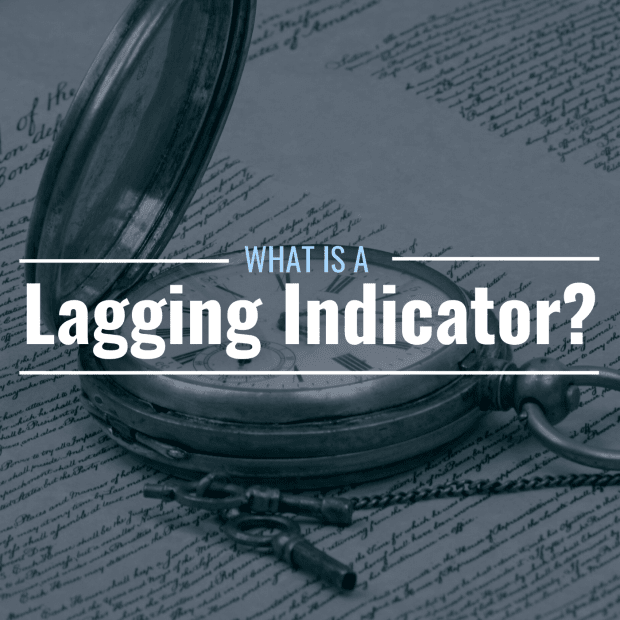
mashabuba fromGetty Images Signature; Canva
What Are Lagging Indicators? How Do They Differ From Leading Indicators?
In English, the verb “to lag” means to fall behind, and it usually appears with negative connotations. But in finance, lagging indicators are often just as important as leading indicators because they serve as confirmation that changes in patterns or trends have taken place.
Unlike leading indicators, which are forward-looking, lagging indicators don’t predict trends. Rather, analysts use them to verify that a shift or change in the market has occurred. Because the data or statistics they represent have already happened, lagging indicators are not conjecture; lagging indicators are accurate—in fact, some might even say lagging indicators are more important than leading indicators because they represent the truth.
When it comes to investing, often the best way to move forward is to understand and apply the insights you’ve learned from the past, which makes lagging indicators especially valuable.
Examples of Leading Indicators vs. Lagging Indicators
Leading and lagging indicators often work hand-in-hand to paint a complete picture of the economy. For example, analysts often look at daily or weekly data or statistics to spot emerging patterns or trends, which are then confirmed or dispelled by other published reports. After all, one data set does not make a trend.
Here is a chart of a few leading indicators and their lagging counterparts.
Recessions, or period of broad-ranging economic decline, typically last from 6 months to a year. But the National Bureau of Economic Research (NBER) waits 12–18 months to categorize its business cycle periods. Why?
The NBER doesn’t define recessions solely by a timeframe of decline, such as two consecutive quarters of GDP contraction; rather, it measures the severity and depth of the downturn by considering a variety of statistics, such as real personal income, nonfarm payrolls, employment, industrial production, etc. in order to best determine the precise state of the economy. After all, a declaration of recession isn’t taken lightly; usually, consumer confidence erodes, and the stock market experiences selloffs and volatility as a result.
While we don’t ever really know if we’re nearing a recession until we’re already in one, data measured through its duration can prove that the economy entered a state of contraction. Therefore, recessions can be considered lagging indicators.
Since recessions are lagging indicators, some consider their counterpart (leading) indicator to be yield curve inversion. This leading indicator often hints that a recession is coming.
Yield curve inversion is a phenomenon that happens when the yields on 2-Year Treasury securities become higher than the yields on 10-Year Treasury securities. It doesn’t make sense for investors to purchase a longer-term Treasury bond, which inherently has more risk, for a lower payout than a shorter-term bond, does it? Therefore, yield curve inversion is often thought of as an indicator of weakness in the economy—and it can be viewed as a reliable predictor of recession.
Are Interest Rates a Lagging Indicator?
Yes, interest rates can be considered a lagging indicator. The Federal Reserve raises, lowers, or maintains the Fed Funds rate in response to other factors, such as inflation and employment.
For example, in a period of rising prices and evidence of economic strength, such as GDP growth, the Fed may choose to raise interest rates to quell inflation. However, when both prices and unemployment are on the rise, the Fed may opt to leave interest rates unchanged or cut them, thus making it easier for consumers to obtain loans, homebuyers to get mortgages and businesses to grow.
The Fed needs to examine a host of economic data in preparation for its FOMC meetings because a decision to change prevailing interest rates can leave a lasting impact on the economy.
Is Inflation a Lagging Indicator?
Yes, inflation can be considered a lagging indicator. Inflation is defined as a period of rising prices, and when prices go up, people can’t afford as much as they used to; therefore, inflation is also a period of declining purchasing power.
The Consumer Price Index (CPI) measures dollar-value changes in consumer goods at different points in time and is one of the best gauges of inflation. For example, if a dollar bought a small ice cream cone a year ago, but the same-sized ice cream cone cost two dollars today, inflation has occurred. The Bureau of Labor Statistics produces the CPI by sending expenditure surveys, which take into consideration a variety of goods and services, to a large sample of American households. Usually, the survey timeframe is a two-year period; however, the Bureau of Labor Statistics continually runs these surveys and compiles and publishes CPI data by geographical area on a monthly basis.
Is Unemployment Leading or Lagging?
Unemployment is considered a lagging indicator: It is an effect of economic growth, not a cause. Leading indicators, like weekly jobless claims, help shed light on the direction the economy is headed, while the monthly unemployment report helps to confirm that these trends have happened. Growing unemployment demonstrates weakness in the economy, and if it has been on the rise for a few months, the economy may be entering a recession.
Which Indicators Are Not Lagging?
The main takeaway is that leading indicators are not always accurate predictors of broader changes in the economy; conclusions can vary as data is released. Therefore, analysts wait for lagging indicators to confirm trends or shifts. Here are some leading indicators to keep an eye on to see if new trends or shifts are taking place—just remember to take them with a grain of salt.
- Manufacturing activity
- Bond yields
- Inventory levels
- Building permits







